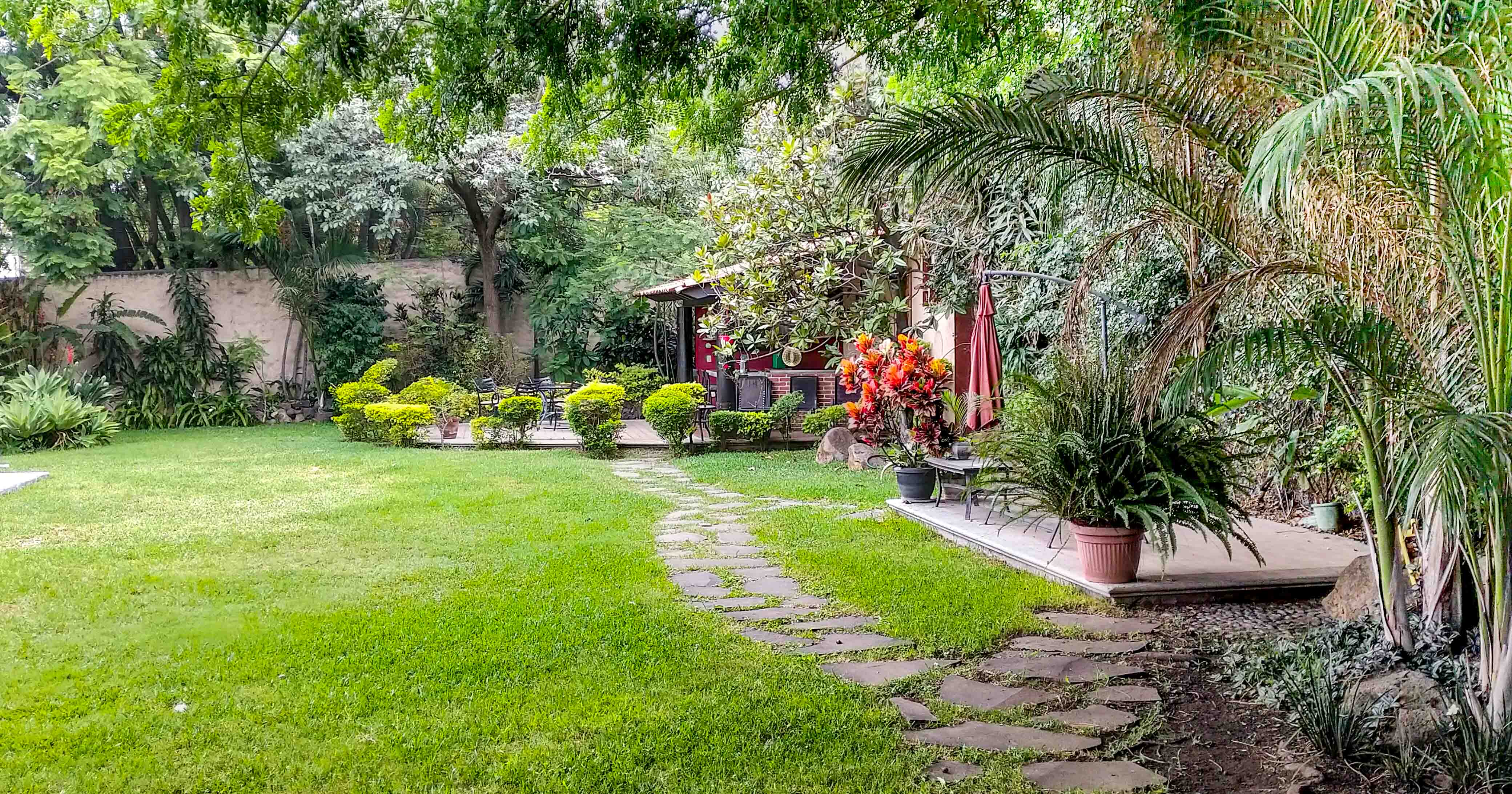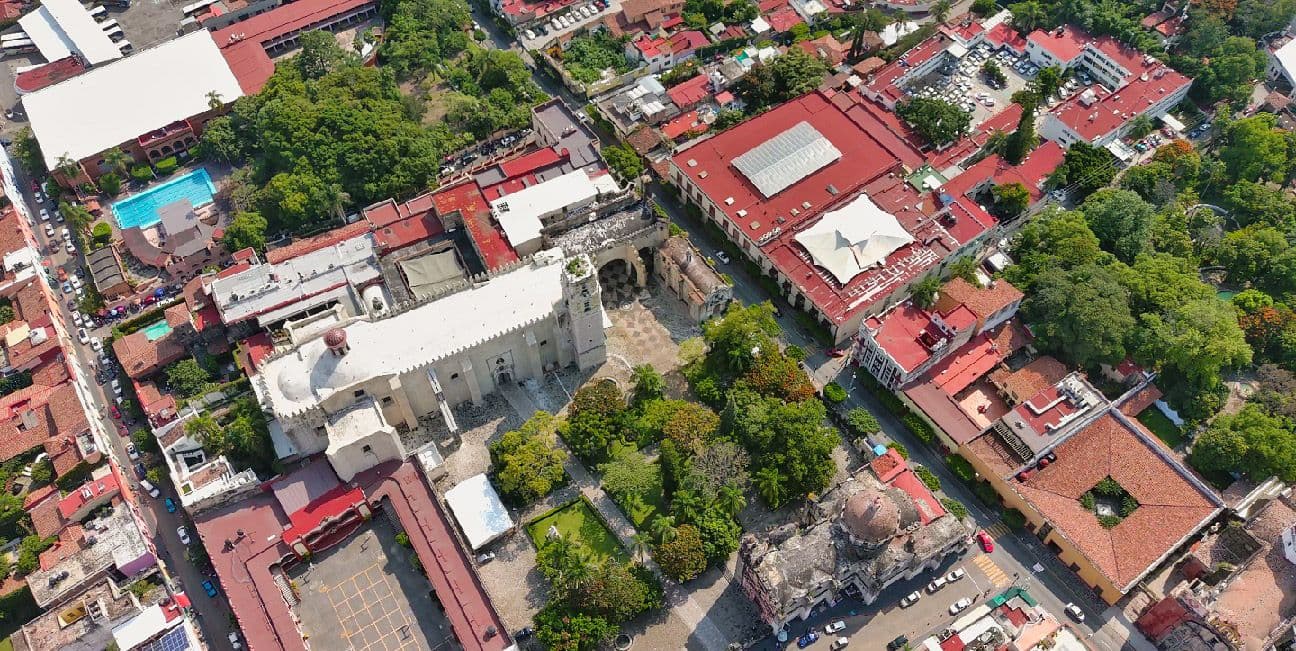July 29, 2023
•
5 min read
What Drone Footage Reveals about Garden Culture in Cuernavaca
Our drone footage revealed that behind the hidden walls of Cuernavaca lies a secret garden culture. Click here to learn more!
Rafael Bracho
Insurance Expert
Introduction:
What Drone Footage Reveals about Garden Culture in Cuernavaca
Cuernavaca is a portmanteau of the words “cuerno” (horn) and “vaca” (cow), however, it’s really just a Spanish corruption of the original name for the region: Cuauhnáhuac. In Nahuatl, it means, “the place beside the trees”, and when we look at drone footage of Cuernavaca, we can see how it got its name.
Cuernavaca’s moniker, The City of Eternal Spring, mostly refers to the city’s temperate climate. However, the leafy foliage and lush vegetation have certainly added to Cuernavaca’s romantic image. Things grow in Cuernavaca. For example, during the peak pandemic, we started a compost pile. Well, this week, we harvested our first papaya! Plants thrive in Cuernavaca.
In 1810, the German geographer, Alexander von Humboldt—who now has a street named after him in Cuernavaca—wrote:
To the south east of the city of Cuernuvaca (the ancient Quauhnahuac), on the western declivity of the Cordillera of Anahuac, in that happy region, designated by the inhabitants under the name of tierra templada (temperate region) because it is the reign of perpetual spring, rises an insolated hill, which, according to the barometrical measurement of Mr. Alzate, is one hundred and seven metres high.
The Secret Garden Culture Of Cuernavaca
What Drone Footage Reveals about Garden Culture in Cuernavaca
My family's from Cuernavaca. Sadly, the streets of this city often look rundown to such an extent that it’s known to locals as “Cuernavache”—a play on words (“vache” sounding like “bache”, meaning pothole in Spanish). However, drone footage begins to reveal an unexpected side of Cuernavaca: its secret garden culture.
Traffic is horrendous in Cuernavaca. First, the city’s layout is typical of a city whose origins date back 500 years, to the very Conquest. Second, it’s basically a weekend suburb of Mexico City, which lies roughly an hour away. Though the full-time population of Cuernavaca is 350,000, it fills up to 1,000,000 residents on weekends.
But the third reason for the traffic in Cuernavaca is that many streets have been needlessly made into privadas or private roads. The big-city mentality of forgoing community in favor of walling off your space, your secret garden, is now being applied to vacation homes.
Many connecting streets are blocked off with fences and a security guard, forcing two-lane roads that could easily become one-way streets—with these privadas used as connections between the two, as they were originally designed—instead, they’ve become one-lane, two-directional roads which inevitably causes traffic. And worse yet, there’s nowhere to escape because many of the little roads that branch off are closed to traffic.
Here’s an example from my own neighborhood. The red arrows represent how it could be, but the yellow circles have been walled off, instead forcing the two-lane streets (in red) to have one lane in each direction.

This just points to what I’m dubbing the “secret garden culture”, this private side of Cuernavaca. Oh, sure, there are many very active members of the community, but the numbers don’t lie. Over half the residents of Cuernavaca only come on the weekends, making the journey to their octopus’ garden in the shade. Many often come with food and provisions secured for the weekend so they never have to leave.
My own street is a walled off privada with a security guard. My colonial home is complete with our own lovely secret garden. Check out the photo below, so you can tell I’m speaking from experience, as many guayabos—or people from Cuernavaca—can relate.

Drone Footage Reveals Cuernavaca’s Gardens
What Drone Footage Reveals about Garden Culture in Cuernavaca
When you fly a drone over the city, suddenly the secret is revealed: that Cuernavaca is a lush, green city. You can see the variety of plantlife, showing us precisely why Cuernavaca is the second-most allergenic city in Mexico. You can see our video at the bottom of this article.
This comes in stark contrast to the Cuernavaca you see on the streets, where rundown facades show a downturn in the local economy—and the subsequent upturn in crime. Behind those facades, however, a new Cuernavaca is revealed, teeming with biological life.
Conclusion
What Drone Footage Reveals about Garden Culture in Cuernavaca
Our video ends with the Jardín Borda—a Mexican hacienda dating from the viceregal period of the early 18th century. Built by a wealthy miner from Taxco de Alarcon named, Jose de la Borda, located in Cuernavaca’s zócalo, it’s now a museum dedicated to the botanical and horticultural sophistication of the times.
You can see that this secret garden culture is nothing new in Cuernavaca. It dates back hundreds of years, arriving in Mexico City with the Spanish conquistadors. However, the roots of garden culture go back far longer than the Spanish hacienda, but to the Moors before them—where the garden was a symbol of both civilization, and, paradoxically, one of paradise.
Rafael Bracho
Insurance Expert & Writer
For several years, Rafael has been crafting articles to help expats and nomads in their journey abroad.
Get Protected While Living Abroad
Found this article helpful? Make sure you have the right insurance coverage too. Get instant quotes for international health, life, and travel insurance.
Takes 2 minutes • Compare multiple providers • Expert advice


